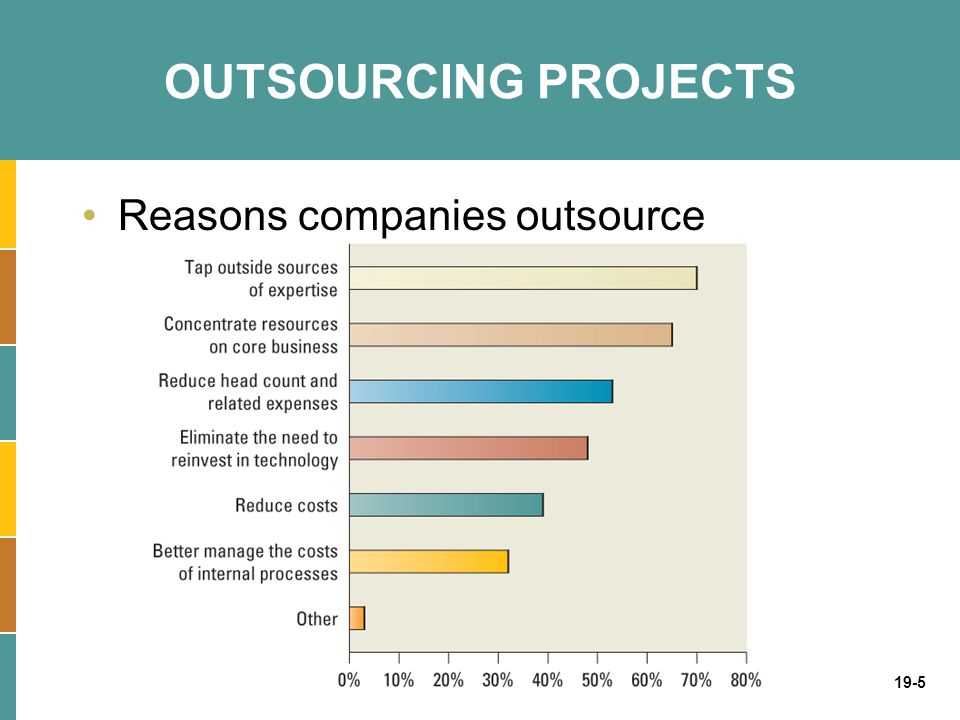CHAPTER 15: OUTSOURCING
Outsourcing
Outsourcing Projects:
- insourcing (in-house-development) - a common approach using the professional expertise within an organization to develop and maintain the organization's information technology systems
- outsourcing - an arrangement by which one organization provides a service or services for another organization that chooses not to perform them in-house

- onshore outsourcing - engaging another company within the same country for services
- nearshore outsourcing - contracting an outsourcing arrangement with a company in a nearby country
- offshore outsourcing - using organizations from developing countries to write code and develop systems
- big selling point for offshore outsourcing "inexpensive good work"
- factors driving outsourcing growth include:
- core competencies
- many companies have recently begun to consider outsourcing as a means to fuel revenue growth rather than just a cost-cutting measure
- financial savings
- it is typically cheaper to hire workers in China and India than similar workers in the United States
- rapid growth
- an organization is able to acquire best-practices process expertise. This facilitates the design, building, training, and deployment of business processes or functions.
- industry changes
- high levels of reorganization across industries have increased demand for outsourcing to better focus on core competencies
- the internet
- the pervasive nature of the internet as an effective sales channel has allowed clients to become more comfortable with outsourcing
- globalization
- as markets open worldwide, competition heats up. Companies may engage outsourcing service providers to deliver international services
- according to PricewaterhouseCoopers "Businesses that outsource are growing faster, larger, and more profitable than those that do not"
- most organizations outsource their noncore business functions, such as payroll and IT
- Outsourcing benefits include:
- increased quality and efficiency
- reduced operating expenses
- outsourcing non-core processes
- reduced exposure to risk
- economies of scale, expertise and best practices
- access to advanced technologies
- increased flexibility
- avoid costly outlay of capital funds
- reduced headcount and associated overhead expense
- reduced time to market for products or services
- outsourcing challenges include:
- contract length
- most outsourcing contracts span several years and cause the issues discussed above
- difficulties in getting out of a contract
- problems in foreseeing future needs
- problems in reforming an internal IT department after the contract is finished
- competitive edge
- effective and innovative use of IT can be lost when using an outsourcing service provider
- confidentiality
- confidential information might be breached by an outsourcing services provider, especially one that provides services to competitors
- scope definition
- scope creep is a common problem with outsourcing agreements
17 DECEMBER 2017
SUNDAY


Comments
Post a Comment